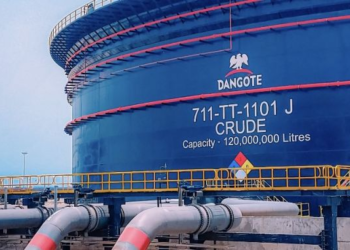Amazon.com Inc.’s advertising rates jumped more than 50% in May from a year earlier, signaling the online retailer’s rising profitability should continue through busy periods like its upcoming summer sale Prime Day and the holiday shopping season.
The rise in ad rates, reported by industry researcher Marketplace Pulse, may give lawmakers and regulators momentum in their effort require Amazon to pay higher taxes and push merchants on the e-commerce platform to raise prices at a time they are grappling with higher shipping costs and other inflationary pressures.
The pandemic-fueled surge in online shopping has triggered greater advertising competition on Amazon, where global shoppers will spend an estimated $578 billion this year, according to EMarketer Inc. Big brands like Procter & Gamble Co. and Clorox Co. are bringing billion dollar advertising budgets to Amazon to maintain their dominance as sales shift from stores to websites. They’re duking it out with small brands that have trouble breaking into physical stores with limited shelf space, but have a fighting chance online if they pay to be seen on Amazon.
The cost per click for Amazon search advertising was $1.16 in May, up from 75 cents a year earlier, according to Marketplace Pulse. That’s driven the average advertising cost of each Amazon sale to more than 30% of a product’s price, up from about 20% a year ago. Amazon’s advertising revenue in the U.S. alone will surpass $20 billion this year, according to EMarketer, as it continues to nibble away at the market share of Alphabet Inc.’s Google, the leader in digital advertising.
“Prices will continue to rise over time,” said Juozas Kaziukenas, founder and chief executive officer of Marketplace Pulse. “Smaller brands trying to enter the market, it will be increasingly expensive to do it when they are up against established brands who are willing to pay to protect market share.”
The competition also is greater from deep-pocketed aggregators who are buying up popular Amazon brands in hopes of becoming consumer brand conglomerates in the digital frontier. Companies such as Thrasio, Perch and Branded have announced debt and investor funding exceeding $2 billion to buy and expand Amazon brands, with advertising a key tool for growth.
Even at higher rates, Amazon advertising is a good buy compared with other forms of digital marketing like Facebook’s Instagram and Google because shoppers on the e-commerce site are ready to buy, said Ryan Gnesin, CEO of Elevate Brands, an Amazon aggregator that owns 20 brands and is in the process of buying five more.
“By far, we’ve found that Amazon is the most effective and profitable way to drive traffic to our products,” he said. The higher rates have made his company a bit more finicky about which companies it is willing to buy depending on their reliance on advertising for sales, he said.
Global policy makers are eager to collect bigger tax payments from Amazon as part of a coordinated effort against multinational corporations, including big technology companies. The Organization for Economic Cooperation and Development has to get some 140 countries to agree on a plan, which could include targeting Amazon’s most profitable business segments such as advertising.
Some Amazon merchants said the rising advertising prices are forcing them to raise prices and be more cautious with their budgets. “We’re just more picky with our key words and we can’t be as aggressive,” said Chuck Gregorich, a Wisconsin merchant who sells fire pits and outdoor furniture on Amazon. He expects to raise prices on Amazon as much as 10% this year to cover higher shipping and advertising costs.
Amazon has to be cautious about pushing rates too high or it may lose its reputation with shoppers for competitive prices, said Jason Boyce, a former Amazon merchant who now advises online sellers through his firm Avenue7Media.
“It’s becoming very expensive to sell products on Amazon,” he said. “The long-term risk is merchants bring their inventory to Walmart and Target where they can sell for lower prices.”










